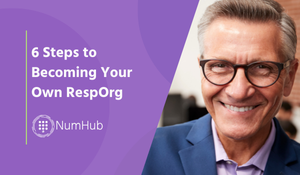Taking control of your toll-free numbers by becoming your own RespOrg is a powerful strategy for...
FAQ: How do you get authoritative ownership of your phone numbers?
RespOrgs and Carrier-Neutrality Allow you to Take Control of Your Phone Numbers
Before the 90s, the notion of carrier neutrality had never been explored. The idea that a toll-free number’s traffic could be split between multiple carriers was established in the design of the toll-free database (est. 1985), but carrier acceptance was a hurdle.
The newly established Bell companies (est. 1983) felt they were guaranteed intra-LATA (local traffic) in perpetuity, so they didn’t care about splitting the traffic. The long-distance carriers didn’t want to split traffic with other long-distance companies believing that revenue would inevitably be affected.
To add further complications, companies simply did not want to work together.
Unfortunately, carrier-neutrality relied on cooperation. The only way to split traffic between multiple carriers was to influence these carriers to allow another RespOrg to put their Carrier Identification Codes (CICs) on their records.
After struggling to align these carriers to best serve the industry and promote innovation-inspiring competition, our founder Aelea Christofferson took it upon herself to service the industry. She formed our company, and became one of the five original RespOrgs, and the only one that offered the service in an outsourced capacity to carriers.
The business began with just one solitary RespOrg customer. The company wanted assistance negotiating better rates with their carrier. Working with us made splitting their traffic possible, so they told their carrier, “Let’s see how taking 25% of our traffic and routing it away from you, to another carrier, works with our negotiations.” The carrier didn’t believe this could be done immediately because number portability was new and the idea of an independent RespOrg was almost unknown. The customer decided to raise the bar and asked us to move 50% of their traffic. So, we did.
We not only helped her client negotiate a better rate, but also altered how one enormous carrier viewed independent, carrier-neutral RespOrgs. When the carrier watched the traffic leaving their switch by the minute, they reluctantly agreed to renegotiate.
Instantly, our customer became unique. They now had two carriers, which not only pro- vided carrier redundancy in the event of a carrier outage (Disaster Recovery), but allowed for least cost routing. They could suddenly save money by splitting traffic between multiple carriers based on time of day, geographic location, and date in addition to gaining protection from carrier outages.
As the carriers began to recognize that their customers wanted the advantages of an independent RespOrg, almost all decided to cooperate and the practice of least cost routing was made possible.



.png?height=200&name=source_of_truth%20(1).png)